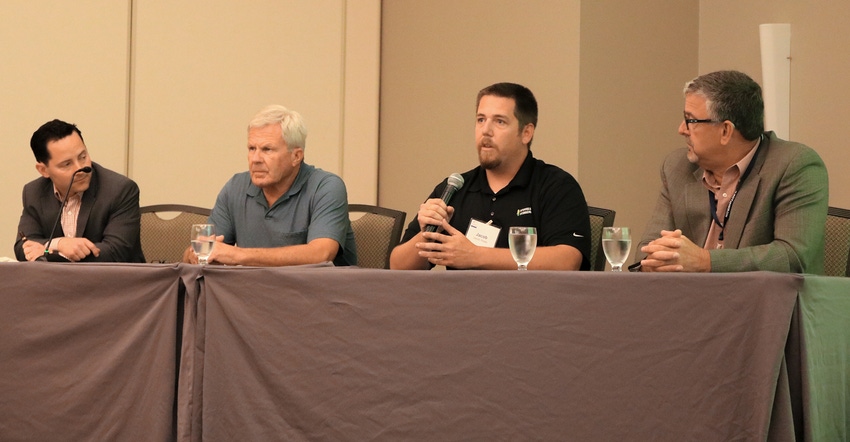
Farmers who get behind on ag tech innovation tend to stay behind.
"The farther behind you get in technology, the more it costs to catch up. It just costs too much for some to make that jump into what I would call the modern world," said farmer Ken Dalenberg of Mansfield, Ill., one of three farmers who spoke during the Illinois Soybean Association’s first ag tech summit, held in mid-July.
"I’ve been involved from the start with everything from yield monitors to autosteer to boom control and shutoff, to all the things we have today," Dalenberg added, noting that since the 1980s, he’s helped startups understand the needs of farmers. This, in turn, helps him stay up to date on the latest technology, such as in-furrow equipment from Precision Planting that automatically adjusts starter placement to conform with the contours of a field.
All three farmers on the panel held at the I-Hotel in Champaign, Ill., agreed the Climate FieldView platform by The Climate Corporation is an invaluable resource for keeping track of field data, including seed varieties that were changed last minute due to rain delays.
However, moving data from John Deere’s Operation Center into Climate and then getting it back out “is a lot harder than it is if you were just taking the data out of the John Deere Operations Center,” Dalenberg said. “We still have platforms that don’t talk to each other.”
Time spent manually entering data could be better used working to improve other aspects of the operation — but having every piece of information entered accurately is a baseline farmers have to reach before looking at improvements and field trials. For now, the three producers spend more time than they like on data entry. It pays off though, said farmer Jacob Wade of McLean, Ill.
“For this [upcoming] harvest, I did a very large plot of 15- versus 30-inch corn,” Wade said. He managed the experimental field of 14 hybrids (repeated four times) with two Whiteout 2,4-D and fungicide applications, as well as micronutrient feedings.
“That was a big trial to get in this year, but I made time to do it, and it’s looking great. I’m really excited to take that field and get yield data from it,” Wade said.
Looking to the future
Steve Pitstick of Maple Park, Ill., said he’s no futurist, but he does see automation as “the next big thing,” saying that within 10 years, tillage could potentially be taken out of human hands. Or at least, machines will become smarter to the point where humans can be less involved.
“There’s this idea that autonomous is going to take over, but I think that’s quite a ways out there,” Pitstick said. “We like to drive machinery, so I think in the autonomous space, it’ll come to tillage first. We as operators, we like to plant, and I wouldn’t want an autonomous machine taking over there just yet. I like harvesting, I like seeing our report cards — I’m not going to give that up yet either.”
After four rounds of planting for 48 hours straight through a wet spring, Wade said he looks forward to automation that’s likely more reliable than part-time help. But in the near term, he’s looking at companies such as Granular that offer to connect financial data currently kept on home computer spreadsheets to agronomic data he keeps in FieldView and AgriSense.
“In the short term, I bet we’ll see better solutions with financial, agronomic platforms that integrate together,” Dalenberg added.
He said application programming interfaces, or APIs, will become more common between the “splinterings” of offerings from different companies.
“At some point, it will get a lot more centralized, as more companies develop APIs to fully integrate the financials into our databases. Nutrien is heading in that direction. Granular, too. But there’s still too much data entry,” Dalenberg concluded.
About the Author(s)
You May Also Like




